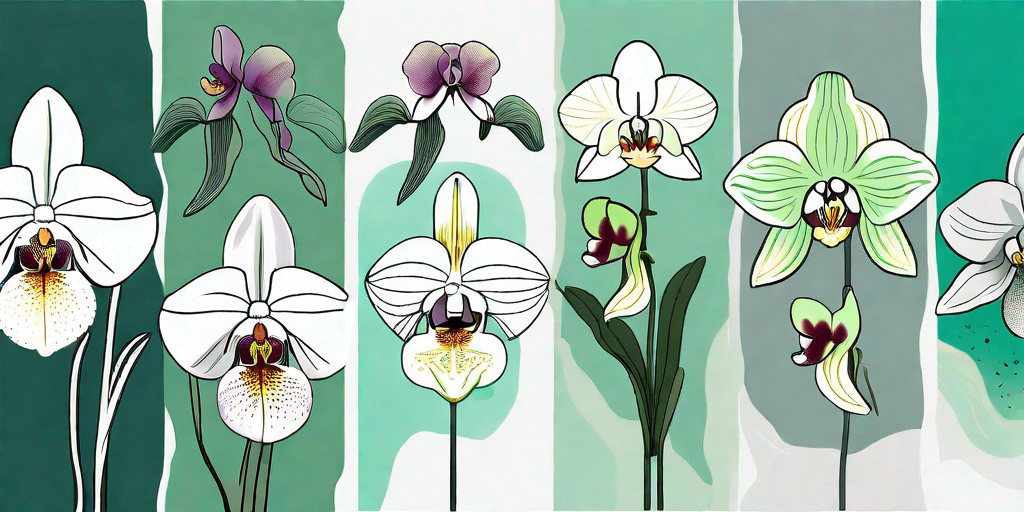
Orchids, the divas of the plant world, are known for their stunning beauty and dramatic flair. But like any diva, they can be a bit high maintenance and prone to a variety of diseases. Fear not, dear reader, for we are here to guide you through the labyrinth of orchid ailments, from the common cold to the more serious, life-threatening conditions. So, buckle up and get ready for a wild ride into the world of orchid healthcare.
Recognizing the Symptoms
Just like humans, orchids communicate their discomfort through symptoms. It's like they're saying, "Hey, I'm not feeling so hot. Can you help me out here?" But instead of a runny nose or a cough, orchids exhibit signs like yellowing leaves, wilting flowers, and black spots. It's your job as a plant parent to recognize these signs and take action.
Now, don't panic. Your orchid isn't going to keel over and die if it has a yellow leaf or two. But if you notice a pattern or a sudden change in your plant's appearance, it's time to play detective and figure out what's going on.
Yellowing Leaves
Yellow leaves can be a sign of several issues, including overwatering, underwatering, or a lack of sunlight. It's like your orchid is trying to get a tan but ends up with a sunburn instead. Not a good look, right?
So, how do you fix it? Start by checking the plant's watering schedule and light conditions. If the plant is getting too much water or not enough light, make the necessary adjustments. Remember, orchids are like Goldilocks – they like everything just right.
Wilting Flowers
Wilting flowers can be a sign of stress or disease. It's like your orchid is saying, "I can't handle the pressure!" But don't worry, we've got some tips to help your plant chill out and get back to its blooming best.
First, check the temperature and humidity levels. Orchids prefer a warm, humid environment, so if your home is more like a desert or a tundra, you'll need to make some changes. Consider investing in a humidifier or moving your plant to a warmer location.
Treating Common Diseases
Now that you know how to recognize the symptoms, let's talk about treatment. Because let's face it, nobody likes a sick orchid.
Just like humans, orchids can suffer from a variety of diseases, including fungal, bacterial, and viral infections. But don't worry, we're not going to leave you in the lurch. We've got some tried and true remedies to help your orchid get back on its feet.
Fungal Infections
Fungal infections are the common cold of the orchid world. They're annoying, but not usually life-threatening. Symptoms include black spots on the leaves and a general decline in the plant's health.
Treatment involves removing the affected leaves and applying a fungicide. It's like giving your orchid a spa day, complete with a facial and a massage. Who wouldn't love that?
Bacterial Infections
Bacterial infections are a bit more serious. They can cause rotting leaves and a foul smell. It's like your orchid has bad breath – not pleasant at all.
Treatment involves removing the affected parts and applying a bactericide. It's a bit like taking your orchid to the dentist, but without the scary drills and the high-pitched whining sound.
Preventing Diseases
As the old saying goes, prevention is better than cure. And when it comes to orchids, this couldn't be more true. By taking a few simple steps, you can keep your orchid healthy and happy, and avoid the need for drastic measures.
First, make sure your orchid is getting the right amount of light, water, and nutrients. It's like feeding your orchid a balanced diet – too much or too little of anything can lead to problems.
Second, keep an eye out for pests. These little critters can cause a lot of damage and spread diseases. It's like your orchid has its own personal army of bodyguards, and you're the commander-in-chief.
FAQs
We know you've got questions, and we've got answers. Here are some of the most common queries we get about orchid diseases.
Why are my orchid's leaves turning yellow?
Yellow leaves can be a sign of overwatering, underwatering, or a lack of sunlight. Check your plant's conditions and make the necessary adjustments.
Why are my orchid's flowers wilting?
Wilting flowers can be a sign of stress or disease. Check the temperature and humidity levels, and consider moving your plant to a more suitable location.
How do I treat a fungal infection?
Remove the affected leaves and apply a fungicide. Remember, it's like giving your orchid a spa day.
How do I treat a bacterial infection?
Remove the affected parts and apply a bactericide. It's like taking your orchid to the dentist, but without the scary drills.
Conclusion
And there you have it, folks. A comprehensive guide to understanding and treating common orchid diseases. With a little bit of knowledge and a lot of love, you can keep your orchid looking its best and living its best life.
So, go forth and conquer, dear reader. Your orchid is counting on you.















